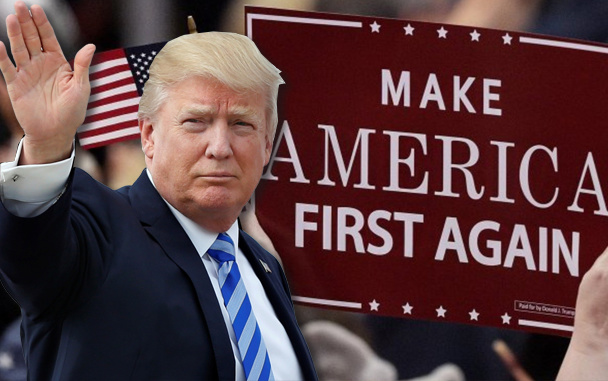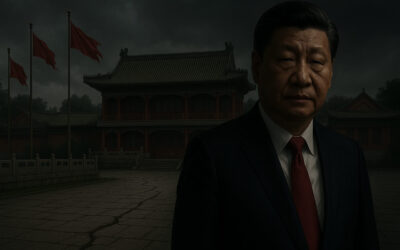The United States’ pivot toward an insular “America First” doctrine is quietly eroding its global influence, a shift with tangible echoes in the streets of Brazil. Where once Ford cars dominated, now Chinese BYD electric vehicles roll out of revitalized plants, a vivid testament to China’s rising economic sway and Brazil’s pragmatic realignment. This isn’t just a local story—it’s a symptom of a broader geopolitical realignment, one where the BRICS+ coalition, born from a 2001 economist’s hunch, is stepping into the vacuum left by a retreating superpower. What’s troubling is how this wasn’t an accident of fate but a consequence of deliberate policy choices in Washington, choices that have handed China, Brazil, and their allies an unexpected opening to challenge the post-Cold War order.
The roots of BRICS trace back to Jim O’Neill’s prescient 2001 paper at Goldman Sachs, where he coined the acronym for Brazil, Russia, India, and China as emerging economic powerhouses. His vision took flight in 2009 with the first summit, and by 2010, South Africa joined, expanding the group’s reach into Africa. Fast forward to 2025, and BRICS+ now boasts ten members, including recent additions like Indonesia, reflecting a growing allure for nations seeking alternatives to Western-led institutions like the G7 or G20. The numbers tell part of the story: since 2009, BRICS’ share of global GDP by purchasing power parity has surged past the G7’s, hitting nearly 40% with the expanded lineup. China, the bloc’s economic titan, drives this growth, its investments and trade networks stretching across the Global South, from Brazil’s soy fields to Africa’s infrastructure projects.
In Brazil, the shift is palpable. Under President Lula’s leadership—enthusiastic about China since 2004 when he first recognized it as a market economy—the country has forged a complementary partnership. China hungers for food security, which Brazil’s vast agricultural output provides, while Brazil gains access to a massive consumer market. Since 2009, China has eclipsed the U.S. as Brazil’s top export destination, a trend that’s only deepened as Chinese direct investment modernizes Brazilian industry. Yet, this isn’t a one-sided romance. Brazil’s economy thrives on flexibility, maintaining trade ties with the U.S., Europe, and China simultaneously, a balancing act that underscores a key tension within BRICS: it’s not a cohesive trading bloc like the EU but a loose alliance of diverse interests.
Russia’s role adds another layer of complexity. Isolated diplomatically since its 2022 actions, it sees BRICS as a lifeline, a counterweight to Western sanctions. Those sanctions, ironically, have fueled intra-bloc trade, which jumped 40% to over $700 billion from 2021 to 2024. This shift has accelerated the use of local currencies, with China’s yuan gaining ground in overseas transactions, bypassing the dollar. The idea of a common BRICS currency floats in the air, a bold bid to dent Western financial dominance. But can this vision hold? China’s influence—accounting for over 35% of Russia’s external trade—looms large, raising questions about whether BRICS is less a partnership and more a vehicle for Beijing’s ambitions.
The coalition’s economic clout is undeniable, yet its political unity remains fragile. The addition of four members in 2024 and Indonesia this year has swelled its ranks, but not its cohesion. India and China, for instance, eye each other warily across their shared border, while Brazil resists fully aligning with any camp, wary of alienating traditional partners. This disunity is BRICS’ Achilles’ heel, a point underscored by the New Development Bank, which finances Global South projects with fewer strings than the World Bank. It’s a promising start, but small-scale, its potential hobbled by the group’s inability to harmonize tariffs or trade policies.
The “America First” trade war, initiated under Trump, has been a catalyst here. By pulling back from multilateral engagement, the U.S. has inadvertently strengthened BRICS solidarity, pushing the bloc to position itself as the only global forum capable of countering Western economic pressure. This multipolar dream—where multiple centers of power challenge the U.S.-led order—gains traction as BRICS countries leverage their growing populations and wealth for political might. Yet, it’s a dream tempered by reality. The group’s rapid expansion risks diluting its focus, and internal rivalries could stall its momentum.
China’s role is the linchpin. As the richest and most powerful BRICS member, it wields the group as a tool to amplify its global stature, from infrastructure loans in Africa to tech investments in Southeast Asia. Its economic might, however, doesn’t guarantee leadership—India’s own ambitions and Russia’s reliance on Chinese support create a delicate dance. For Brazil, the equation is different: it sees BRICS as a stage to elevate its geopolitical voice, not as a master. This diversity of intent makes the coalition a fascinating experiment, but also a fragile one.
The hurdles are steep. Trade relationships within BRICS lag behind integrated blocs like the EU, with each nation navigating tariffs and markets independently. Geopolitical tensions—China’s assertiveness, India’s caution, Russia’s isolation—threaten to fracture the alliance. And then there’s the broader agenda: climate change, global trade, infectious diseases. These are issues where BRICS could prove its worth, yet its members’ differing priorities—China’s industrial focus versus Brazil’s environmental concerns—complicate a unified stance. The New Development Bank offers a glimpse of potential, funding projects with an eye toward sovereignty rather than Western values, but it’s a fledgling effort.
What’s clear is that the U.S. retreat has handed BRICS a historic opportunity. The sanctions on Russia, meant to isolate, have instead woven the bloc tighter, with trade in local currencies rising as a quiet rebellion against the dollar. China’s economic engine powers this shift, but it’s Brazil’s pragmatic adaptability that keeps the coalition grounded. Still, the question lingers: can this disparate group overcome its divisions to bend the global order? It’s tempting to see BRICS as the next superpower alliance, but its strength lies more in symbolism than substance—for now.
The stakes are high. A multipolar world could democratize global governance, giving voice to the Global South. But it could also fragment it, leaving no one in charge as challenges like climate crises loom. The U.S.’s inward turn has lit the fuse, but BRICS’ success depends on its members’ willingness to align on more than rhetoric. Economic growth and population booms give them leverage, yet without a shared vision, that leverage may dissipate. The world watches, waiting to see if this coalition can evolve from a symbolic grouping into a transformative force.
Reflecting on this, one can’t help but feel a quiet frustration. The U.S. had the chance to lead, to shape a cooperative future, but chose isolation instead. Now, China, Brazil, and their BRICS partners are filling the gap, not always with unity but with intent. Their trajectory suggests a reordering of power, yet the path is fraught with contradictions—economic promise clashing with political discord. That should be a wake-up call: the global stage is shifting, and the outcome hinges on whether BRICS can harness its potential or crumble under its own weight. For now, the story remains unfinished, a testament to ambition meeting the messy reality of international relations.



